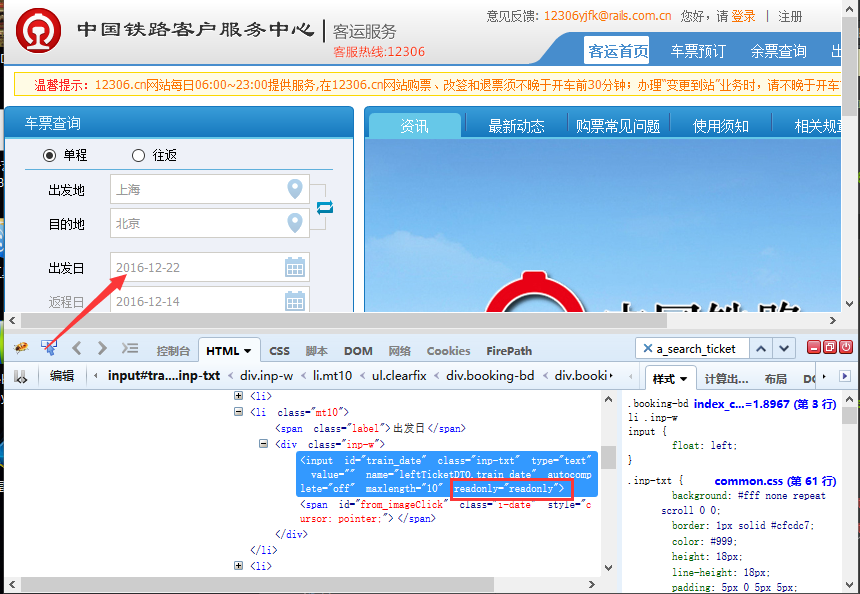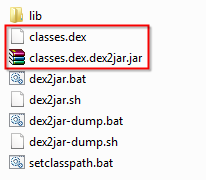一、前言
二、概述
三、环境准备
四、安装MySQL 5.5.35
五、新建支持多实例的配置文件(我这里配置的是四个实例)
六、初始化多实例数据库
七、提供管理脚本 mysqld_multi.server
八、整体备份方便后续迁移
九、管理MySQL多实例
十、登录MySQL多实例
十一、其它管理配置
十二、总结
注,测试环境 CentOS 6.4 x86_64,软件版本 MySQL 5.5.35,软件下载地址:http://dev.mysql.com/downloads/mysql/5.1.html#downloads。
1.应用场景
采用了数据伪分布式架构的原因,而项目启动初期又不一定有那多的用户量,为此先一组物理数据库服务器,但部署多个实例,方便后续迁移;
为规避mysql对SMP架构不支持的缺陷,使用多实例绑定处理器的办法,把不同的数据库分配到不同的实例上提供数据服务;
一台物理数据库服务器支撑多个数据库的数据服务,为提高mysql复制的从机的恢复效率,采用多实例部署;
已经为双主复制的mysql数据库服务器架构,想部分重要业务的数据多一份异地机房的热备份,而mysql复制暂不支持多主的复制模式,且不给用户提供服务,为有效控制成本,会考虑异地机房部署一台性能超好的物理服务器,甚至外加磁盘柜的方式,为此也会部署多实例;
传统游戏行业的MMO/MMORPG,以及Web Game,每一个服都对应一个数据库,而可能要做很多数据查询和数据订正的工作,为减少维护而出错的概率,也可能采用多实例部署的方式,按区的概念分配数据库;
上面的应用场景介绍主要参考这篇文章:http://www.zhdba.com/mysqlops/2011/07/30/multi-mysqld/,我们这里应用主要是基于前面三种场景。下面我们来说一下要注意的问题……
2.背景/需求、注意事项
(1).背景与需求
将所有的安装文件、配置文件、数据目录全部放存/data/mysql目录中,便于今后实现快速迁移、整体备份和快速复制;
在一台服务器上运行四个MySQL实例,分别绑定在3306、3307、3308、3309端口上;
四个实例都开启binlog日志,数据目录分别存放在/data/mysql/data、/data/mysql/data2、/data/mysql/data3、/data/mysql/data4
四个实例均采用InnoDB作为默认的存储引擎,字符编码采用UTF-8;
四个实例均采用相同的性能优化配置参数;
(2).注意事项
在编译安装时,将数据库的配置文件my.cnf以及data目录等均指向到/data/mysql目录中;
通过mysqld_multi的方式来管理四个不同的实例,采用相同的配置文件共享性能优化配置参数;
在同一个配置文件中,利用[mysqld1]、[mysqld2]、[mysqld3]、[mysqld4]标签实现不同实例的差异化配置;
三、环境准备
1.安装yum源
1 2 | [root@node1 src]# wget http://mirrors.hustunique.com/epel/6/x86_64/epel-release-6-8.noarch.rpm[root@node1 src]# rpm -ivh epel-release-6-8.noarch.rpm |
2.同步时间
1 2 3 | [root@node1 src]# yum install -y ntp[root@node1 src]# ntpdate 202.120.2.101[root@node1 src]# hwclock –w |
3.安装mysql5.5依赖包
1 | [root@node1 ~]# yum install -y autoconf* automake* zlib* libxml* ncurses-devel* libgcrypt* libtool* openssl* |
4.安装cmake
1 | [root@node1 ~]# yum install -y cmake |
四、安装MySQL 5.5.35
1.创建安装目录与数据存放目录
1 2 | [root@node1 ~]# mkdir /data/mysql[root@node1 ~]# mkdir /data/mysql/data |
2.创建mysql用户与组
1 2 3 | [root@node1 ~]# useradd mysql[root@node1 ~]# id mysql uid=500(mysql) gid=500(mysql) 组=500(mysql) |
3.授权安装目录与数据目录
1 2 | [root@node1 ~]# chown -R mysql.mysql /data/mysql/ [root@node1 ~]# chown -R mysql.mysql /data/mysql/data |
4.安装mysql
1 2 3 4 5 | [root@node1 ~]# cd src/ [root@node1 src]# tar xf mysql-5.5.35.tar.gz [root@node1 src]# cd mysql-5.5.35[root@node1 mysql-5.5.35]# cmake -DCMAKE_INSTALL_PREFIX=/data/mysql -DSYSCONFDIR=/data/mysql/etc -DMYSQL_DATADIR=/data/mysql/data -DMYSQL_TCP_PORT=3306 -DMYSQL_UNIX_ADDR=/tmp/mysqld.sock -DMYSQL_USER=mysql -DEXTRA_CHARSETS=all -DWITH_READLINE=1 -DWITH_SSL=system -DWITH_EMBEDDED_SERVER=1 -DENABLED_LOCAL_INFILE=1 -DWITH_INNOBASE_STORAGE_ENGINE=1[root@node1 mysql-5.5.35]# make && make install |
好了,到这里我们的mysql就安装完成了,下面我们为mysql提供多实例配置文件。
五、新建支持多实例的配置文件(我这里配置的是四个实例)
1.删除默认的数据目录
1 2 | [root@node1 ~]# cd /data/mysql/ [root@node1 mysql]# rm -rf data |
2.创建多实例配置需要的目录
1 2 | [root@node1 mysql]# mkdir etc tmp run log binlogs data data2 data3 data4[root@node1 mysql]# chown -R mysql.mysql tmp run log binlogs data data2 data3 data4 |
3.提供配置文件
1 2 3 4 5 6 7 8 9 10 11 12 13 14 15 16 17 18 19 20 21 22 23 24 25 26 27 28 29 30 31 32 33 34 35 36 37 38 39 40 41 42 43 44 45 46 47 48 49 50 51 52 53 54 55 56 57 58 59 60 61 62 63 64 65 66 67 68 69 70 71 72 73 74 75 76 77 78 79 80 81 82 83 84 85 86 87 88 89 90 91 92 93 94 95 96 97 98 99 100 101 102 103 104 105 106 107 108 109 110 111 112 113 114 115 116 117 118 119 120 121 122 123 124 125 126 127 128 129 130 131 132 133 134 135 136 137 138 139 140 141 142 143 144 145 146 147 148 149 150 151 152 153 154 155 156 157 158 159 160 161 162 163 164 165 166 167 168 169 170 171 172 173 174 175 | [root@node1 ~]# cd src/ [root@node1 src]# cd mysql-5.5.35[root@node1 mysql-5.5.35]# cp support-files/my-small.cnf /data/mysql/etc/my.cnf[root@node1 ~]# cd /data/mysql/etc/ [root@node1 etc]# vim my.cnf # This server may run 4+ separate instances. So we use mysqld_multi to manage their services.[client] default-character-set = utf8[mysqld_multi] mysqld = /data/mysql/bin/mysqld_safemysqladmin = /data/mysql/bin/mysqladminlog = /data/mysql/log/mysqld_multi.log user = root #password = # This is the general purpose database. # The locations are default. # They are left in [mysqld] in case the server is started normally instead of by mysqld_multi.[mysqld1] socket = /data/mysql/run/mysqld.sock port = 3306 pid-file = /data/mysql/run/mysqld.pid datadir = /data/mysql/datalc-messages-dir = /data/mysql/share/english # These support master - master replication #auto-increment-increment = 4 #auto-increment-offset = 1 # Since it is master 1 log-bin = /data/mysql/binlogs/bin-log-mysqld1log-bin-index = /data/mysql/binlogs/bin-log-mysqld1.index #binlog-do-db = # Leave this blank if you want to control it on slave max_binlog_size = 1024M # This is exlusively for mysqld2 # It is on 3307 with data directory /data/mysqld/data2[mysqld2] socket = /data/mysql/run/mysqld.sock2 port = 3307 pid-file = /data/mysql/run/mysqld.pid2 datadir = /data/mysql/data2lc-messages-dir = /data/mysql/share/english # Disable DNS lookups #skip-name-resolve # These support master - slave replication log-bin = /data/mysql/binlogs/bin-log-mysqld2log-bin-index = /data/mysql/binlogs/bin-log-mysqld2.index #binlog-do-db = # Leave this blank if you want to control it on slave max_binlog_size = 1024M # Relay log settings#relay-log = /data/mysql/log/relay-log-mysqld2#relay-log-index = /data/mysql/log/relay-log-mysqld2.index#relay-log-space-limit = 4G # Slow query log settings#log-slow-queries = /data/mysql/log/slow-log-mysqld2#long_query_time = 2#log-queries-not-using-indexes # This is exlusively for mysqld3 # It is on 3308 with data directory /data/mysqld/data3[mysqld3] socket = /data/mysql/run/mysqld.sock3 port = 3308 pid-file = /data/mysql/run/mysqld.pid3 datadir = /data/mysql/data3lc-messages-dir = /data/mysql/share/english#Disable DNS lookups #skip-name-resolve# These support master - slave replication log-bin = /data/mysql/binlogs/bin-log-mysqld3log-bin-index = /data/mysql/binlogs/bin-log-mysqld3.index #binlog-do-db = # Leave this blank if you want to control it on slave max_binlog_size = 1024M # This is exlusively for mysqld4# It is on 3309 with data directory /data/mysqld/data4[mysqld4] socket = /data/mysql/run/mysqld.sock4 port = 3309 pid-file = /data/mysql/run/mysqld.pid4 datadir = /data/mysql/data4lc-messages-dir = /data/mysql/share/english# Disable DNS lookups #skip-name-resolve# These support master - slave replication log-bin = /data/mysql/binlogs/bin-log-mysqld4log-bin-index = /data/mysql/binlogs/bin-log-mysqld4.index #binlog-do-db = # Leave this blank if you want to control it on slave max_binlog_size = 1024M # The rest of the my.cnf is shared# Here follows entries for some specific programs# The MySQL server[mysqld] basedir = /data/mysqltmpdir = /data/mysql/tmpsocket = /data/mysql/run/mysqld.sock port = 3306 pid-file = /data/mysql/run/mysqld.pid datadir = /data/mysql/datalc-messages-dir = /data/mysql/share/english skip-external-locking key_buffer_size = 16K max_allowed_packet = 1M table_open_cache = 4 sort_buffer_size = 64K read_buffer_size = 256K read_rnd_buffer_size = 256K net_buffer_length = 2K thread_stack = 128K # Increase the max connections max_connections = 2 # The expiration time for logs, including binlogs expire_logs_days = 14 # Set the character as utf8 character-set-server = utf8 collation-server = utf8_unicode_ci # This is usually only needed when setting up chained replication #log-slave-updates # Enable this to make replication more resilient against server crashes and restarts # but can cause higher I/O on the server #sync_binlog = 1 # The server id, should be unique in same network server-id = 1 # Set this to force MySQL to use a particular engine/table-type for new tables # This setting can still be overridden by specifying the engine explicitly # in the CREATE TABLE statement default-storage-engine = INNODB # Enable Per Table Data for InnoDB to shrink ibdata1 innodb_file_per_table = 1 # Uncomment the following if you are using InnoDB tables #innodb_data_home_dir = /data/mysql/data #innodb_data_file_path = ibdata1:10M:autoextend #innodb_log_group_home_dir = /data/mysql/data # You can set .._buffer_pool_size up to 50 - 80 % of RAM # but beware of setting memory usage too high innodb_buffer_pool_size = 16M innodb_additional_mem_pool_size = 2M # Set .._log_file_size to 25 % of buffer pool size innodb_log_file_size = 5M innodb_log_buffer_size = 8M innodb_flush_log_at_trx_commit = 1 innodb_lock_wait_timeout = 50 [mysqldump] quick max_allowed_packet = 16M [mysql] no-auto-rehash [myisamchk] key_buffer_size = 8M sort_buffer_size = 8M [mysqlhotcopy] interactive-timeout [mysql.server] user = mysql [mysqld_safe] log-error = /data/mysql/log/mysqld.log pid-file = /data/mysql/run/mysqld.pid open-files-limit = 8192 |
注,MySQL自带了几个不同的配置文件,放置在/data/mysql/support-files目录下,分别是my-huge.cnf,my-innodb-heavy-4G.cnf,my-large.cnf,my-medium.cnf,my-small.cnf,通过名称我们可以很直观的了解到他们是针对不同的服务器配置的,本文的配置文件是来自于my-small.cnf的,因为我是在虚拟机上进行的设置;在生产环境中,我们可以通过参考my-huge.cnf或my-innodb-heavy-4G.cnf中的部分参数配置,来对服务器进行优化;
4.修改my.cnf读写权限
1 2 | [root@node1 etc]# chown -R root.root /data/mysql/etc[root@node1 etc]# chmod 600 /data/mysql/etc/my.cnf |
好了,到这里我们的配置文件就设置完成了,下面我们来初始化一下数据库。
六、初始化多实例数据库
1.切换到mysql的安装目录
1 | [root@node1 ~]# cd /data/mysql/ |
2.初始化实例[mysqld1]
1 | [root@node1 mysql]# scripts/mysql_install_db --basedir=/data/mysql --datadir=/data/mysql/data --user=mysql |
3.初始化实例[mysqld2]
1 | [root@node1 mysql]# scripts/mysql_install_db --basedir=/data/mysql --datadir=/data/mysql/data2 --user=mysql |
4.初始化实例[mysqld3]
1 | [root@node1 mysql]# scripts/mysql_install_db --basedir=/data/mysql --datadir=/data/mysql/data3 --user=mysql |
5.初始化实例[mysqld4]
1 | [root@node1 mysql]# scripts/mysql_install_db --basedir=/data/mysql --datadir=/data/mysql/data4 --user=mysql |
好了,到这里我们初始化工作就完成了,下面我们来提供一下多实例的管理脚本。
七、提供管理脚本 mysqld_multi.server
1.创建管理脚本目录
1 | [root@node1 mysql]# mkdir /data/mysql/init.d |
2.提供管理脚本
1 | [root@node1 mysql]# cp support-files/mysqld_multi.server init.d/ |
3.简单修改一下脚本
1 2 3 4 5 6 7 8 9 10 11 12 13 14 15 16 17 18 19 20 21 22 23 24 25 26 27 28 29 30 31 32 33 34 35 36 37 38 39 40 41 42 43 44 45 46 | [root@node1 mysql]# cd init.d/ [root@node1 init.d]# vim mysqld_multi.server #!/bin/sh # # A simple startup script for mysqld_multi by Tim Smith and Jani Tolonen. # This script assumes that my.cnf file exists either in /etc/my.cnf or # /root/.my.cnf and has groups [mysqld_multi] and [mysqldN]. See the # mysqld_multi documentation for detailed instructions. # # This script can be used as /etc/init.d/mysql.server # # Comments to support chkconfig on RedHat Linux # chkconfig: 2345 64 36 # description: A very fast and reliable SQL database engine. # # Version 1.0 #basedir=/data/mysqlbindir=/data/mysql/binconf=/data/mysql/etc/my.cnf export PATH=$PATH:$bindirif test -x $bindir/mysqld_multithen mysqld_multi="$bindir/mysqld_multi"; else echo "Can't execute $bindir/mysqld_multi from dir $basedir"; exit; ficase "$1" in 'start' ) "$mysqld_multi" --defaults-extra-file=$conf start $2 ;; 'stop' ) "$mysqld_multi" --defaults-extra-file=$conf stop $2 ;; 'report' ) "$mysqld_multi" --defaults-extra-file=$conf report $2 ;; 'restart' ) "$mysqld_multi" --defaults-extra-file=$conf stop $2 "$mysqld_multi" --defaults-extra-file=$conf start $2 ;; *) echo "Usage: $0 {start|stop|report|restart}" >&2 ;; esac |
好了,到这里我们所有的配置就全部完成了,下面我们打包备份一下。
八、整体备份方便后续迁移
1 2 3 4 5 6 7 | [root@node1 ~]# cd /data/ [root@node1 data]# tar czvf mysql-5.5.350-full.tar.gz /data/mysql/[root@node1 data]# ll -h 总用量 128M drwx------. 2 root root 16K 8月 17 18:42 lost+found drwxr-xr-x 22 mysql mysql 4.0K 1月 6 22:08 mysql -rw-r--r-- 1 root root 128M 1月 7 00:25 mysql-5.5.350-full.tar.gz |
注,备份完成后,直接将mysql-5.5.350-full.tar.gz拿到其他服务器上,解压后便可以直接启用。嘿嘿,方便吧……
九、管理MySQL多实例
1.同时启动四个mysql实例
(1).方法一:
1 | [root@node1 ~]# /data/mysql/init.d/mysqld_multi.server start 1,2,3,4 |
或方法二:
1 | [root@node1 ~]# /data/mysql/init.d/mysqld_multi.server start 3306,3307,3308,3309 |
(2).查看一下启动的实例
1 2 3 4 5 | [root@node1 ~]# netstat -ntulp | grep mysqld tcp 0 0 0.0.0.0:3307 0.0.0.0:* LISTEN 31416/mysqldtcp 0 0 0.0.0.0:3308 0.0.0.0:* LISTEN 31414/mysqldtcp 0 0 0.0.0.0:3309 0.0.0.0:* LISTEN 31420/mysqldtcp 0 0 0.0.0.0:3306 0.0.0.0:* LISTEN 31413/mysqld |
2.同时关闭四个mysql实例
(1).方法一:
1 | [root@node1 ~]# /data/mysql/init.d/mysqld_multi.server stop 1,2,3,4 |
或方法二:
1 | [root@node1 ~]# /data/mysql/init.d/mysqld_multi.server stop 3306,3307,3308,3309 |
3.单独启动或关闭mysql实例
(1).启动一个实例
1 2 3 | [root@node1 ~]# /data/mysql/init.d/mysqld_multi.server start 1[root@node1 ~]# netstat -ntulp | grep mysqld tcp 0 0 0.0.0.0:3306 0.0.0.0:* LISTEN 32221/mysqld |
(2).关闭一个实例
1 | [root@node1 ~]# /data/mysql/init.d/mysqld_multi.server stop 1 |
注,启动或关闭两个或者三个实例方法的上面相同这里就不再演示。
十、登录MySQL多实例
注,我们同时启动四个实例,下面我们来演示一下怎么分别登录这四个实例。为了演示四个实例的区别,我们分别在四个实例中创建mydb1、mydb2、mydb3、mydb4。
1.登录[mysqld1]
1 2 3 4 5 6 7 8 9 10 11 12 13 14 15 16 17 18 19 20 21 22 23 24 25 26 27 28 29 30 31 32 33 | [root@node1 ~]# /data/mysql/bin/mysql -uroot -h127.0.0.1 -P3306 -p Enter password: Welcome to the MySQL monitor. Commands end with ; or \g. Your MySQL connection id is 1 Server version: 5.5.35-log Source distributionCopyright (c) 2000, 2013, Oracle and/or its affiliates. All rights reserved.Oracle is a registered trademark of Oracle Corporation and/or its affiliates. Other names may be trademarks of their respective owners.Type 'help;' or '\h' for help. Type '\c' to clear the current input statement.mysql> show databases; +--------------------+ | Database | +--------------------+ | information_schema | | mysql | | performance_schema | | test | +--------------------+ 4 rows in set (0.00 sec) mysql> create database mydb1; Query OK, 1 row affected (0.00 sec)mysql> show databases; +--------------------+ | Database | +--------------------+ | information_schema | | mydb1 | | mysql | | performance_schema | | test | +--------------------+ 5 rows in set (0.00 sec) |
2.登录[mysqld2]
1 2 3 4 5 6 7 8 9 10 11 12 13 14 15 16 17 18 19 20 21 22 23 24 25 26 27 28 29 30 31 32 33 | [root@node1 ~]# /data/mysql/bin/mysql -uroot -h127.0.0.1 -P3307 -p Enter password: Welcome to the MySQL monitor. Commands end with ; or \g. Your MySQL connection id is 1 Server version: 5.5.35-log Source distributionCopyright (c) 2000, 2013, Oracle and/or its affiliates. All rights reserved.Oracle is a registered trademark of Oracle Corporation and/or its affiliates. Other names may be trademarks of their respective owners.Type 'help;' or '\h' for help. Type '\c' to clear the current input statement.mysql> show databases; +--------------------+ | Database | +--------------------+ | information_schema | | mysql | | performance_schema | | test | +--------------------+ 4 rows in set (0.00 sec)mysql> create database mydb2; Query OK, 1 row affected (0.00 sec)mysql> show databases; +--------------------+ | Database | +--------------------+ | information_schema | | mydb2 | | mysql | | performance_schema | | test | +--------------------+ 5 rows in set (0.00 sec) |
3.登录[mysqld3]
1 2 3 4 5 6 7 8 9 10 11 12 13 14 15 16 17 18 19 20 21 22 23 24 25 26 27 28 29 30 31 32 33 | [root@node1 ~]# /data/mysql/bin/mysql -uroot -h127.0.0.1 -P3308 -p Enter password: Welcome to the MySQL monitor. Commands end with ; or \g. Your MySQL connection id is 1 Server version: 5.5.35-log Source distributionCopyright (c) 2000, 2013, Oracle and/or its affiliates. All rights reserved.Oracle is a registered trademark of Oracle Corporation and/or its affiliates. Other names may be trademarks of their respective owners.Type 'help;' or '\h' for help. Type '\c' to clear the current input statement.mysql> show databases; +--------------------+ | Database | +--------------------+ | information_schema | | mysql | | performance_schema | | test | +--------------------+ 4 rows in set (0.01 sec)mysql> create database mydb3; Query OK, 1 row affected (0.00 sec)mysql> show databases; +--------------------+ | Database | +--------------------+ | information_schema | | mydb3 | | mysql | | performance_schema | | test | +--------------------+ 5 rows in set (0.00 sec) |
4.登录[mysqld4]
1 2 3 4 5 6 7 8 9 10 11 12 13 14 15 16 17 18 19 20 21 22 23 24 25 26 27 28 29 30 31 32 33 | [root@node1 ~]# /data/mysql/bin/mysql -uroot -h127.0.0.1 -P3309 -p Enter password: Welcome to the MySQL monitor. Commands end with ; or \g. Your MySQL connection id is 1 Server version: 5.5.35-log Source distributionCopyright (c) 2000, 2013, Oracle and/or its affiliates. All rights reserved.Oracle is a registered trademark of Oracle Corporation and/or its affiliates. Other names may be trademarks of their respective owners.Type 'help;' or '\h' for help. Type '\c' to clear the current input statement.mysql> show databases; +--------------------+ | Database | +--------------------+ | information_schema | | mysql | | performance_schema | | test | +--------------------+ 4 rows in set (0.01 sec)mysql> create database mydb4; Query OK, 1 row affected (0.00 sec)mysql> show databases; +--------------------+ | Database | +--------------------+ | information_schema | | mydb4 | | mysql | | performance_schema | | test | +--------------------+ 5 rows in set (0.00 sec) |
好了,我们的MySQL多实例登录就演示到这里了,下面我们来设置一下mysql的root密码。
十一、其它管理配置
1.为mysql的root用户创建密码
1 2 3 4 | [root@node1 ~]# /data/mysql/bin/mysqladmin -uroot -h127.0.0.1 -P3306 password '123456'[root@node1 ~]# /data/mysql/bin/mysqladmin -uroot -h127.0.0.1 -P3307 password '123456'[root@node1 ~]# /data/mysql/bin/mysqladmin -uroot -h127.0.0.1 -P3308 password '123456'[root@node1 ~]# /data/mysql/bin/mysqladmin -uroot -h127.0.0.1 -P3309 password '123456' |
2.删除匿名连接的空密码帐号
注,分别登录实例[mysqld1]、[mysqld2]、[mysqld3]、[mysqld4],执行以下命令:
1 2 3 4 5 6 | mysql>use mysql; #选择系统数据库mysql mysql>select Host,User,Password from user; #查看所有用户 mysql>delete from user where password="";#删除无密码账户 mysql>flush privileges; #刷新权限 mysql>select Host,User,Password from user; #确认密码为空的用户是否已全部删除 mysql>exit; |
十二、总结
1.采用源码编译安装MySQL,可能在第一次会花费较多的时间,但却是非常值得的,因为我们可以自己组织所有MySQL相关文件的位置;并且经过源码编译安装后的MySQL,可以直接复制到其它服务器上运行,大大方便了我们以后的迁移、备份和新服务器的配置。
2.本文中仅仅用了四个实例[mysqld1]、[mysqld2]、[mysqld3]、[mysqld4]来举例,实际上我们可以通过这样的方式,实现[mysqld5]、[mysqld6]...等更多的实例,前提是你的服务器硬件配置得根得 上,但是一般我们这边不会超过6个实例。
3.在单机运行多实例的情况下,切忌不要使用 mysql -hlocalhost 或 直接忽略-h参数登录服务器,这应该算是MySQL的一个bug,就是如果使用localhost或忽略-h参数,而不是指定127.0.0.1的话,即使选择的端口是3307,还是会登陆到3306中去,因此应尽量避免这种混乱的产生,统一用127.0.0.1绑定端口或采用socket来登录,在mysql5.5中你不指定-h127.0.0.1选项,你是无法登录的。
最后,希望大家有所收获吧^_^……
本文出自 “Share your knowledge …” 博客,请务必保留此出处http://freeloda.blog.51cto.com/2033581/1349312








